Royal Cremation in Ubud… Events like these simply don’t happen very often. So when they do you can expect a large turnout of both locals, who come to pay their respects, and tourists eager to witness the ceremony.

Ubud is, in many ways, the artistic and cultural epicenter of Bali. It’s former royal family still hold huge influence and respect there. So when Tjokorda Istri Sri Tjandrawati, the wife of Tjokorda Gde Putra Sukawati and the leader of that family, passed away on the 14th of October it called for a palebon agung cremation ceremony.
Royal Cremation in Ubud – The Palebon Agung
Palebon agungs are reserved only for royals. As opposed to the more common ngaben ceremony for normal Balinese. They are noted for their splendor – so it was with great expectations that I traveled up from Canggu in the south to Ubud!
Ubud had been a hive of activity as the preparations for the cremation. Which often take months, but were completed in just two weeks. In time for the auspicious date picked by the family for the ceremony. Never having been to one before I was not really sure what to expect, but came away from the event with a mixture of awe, admiration and sunburn…
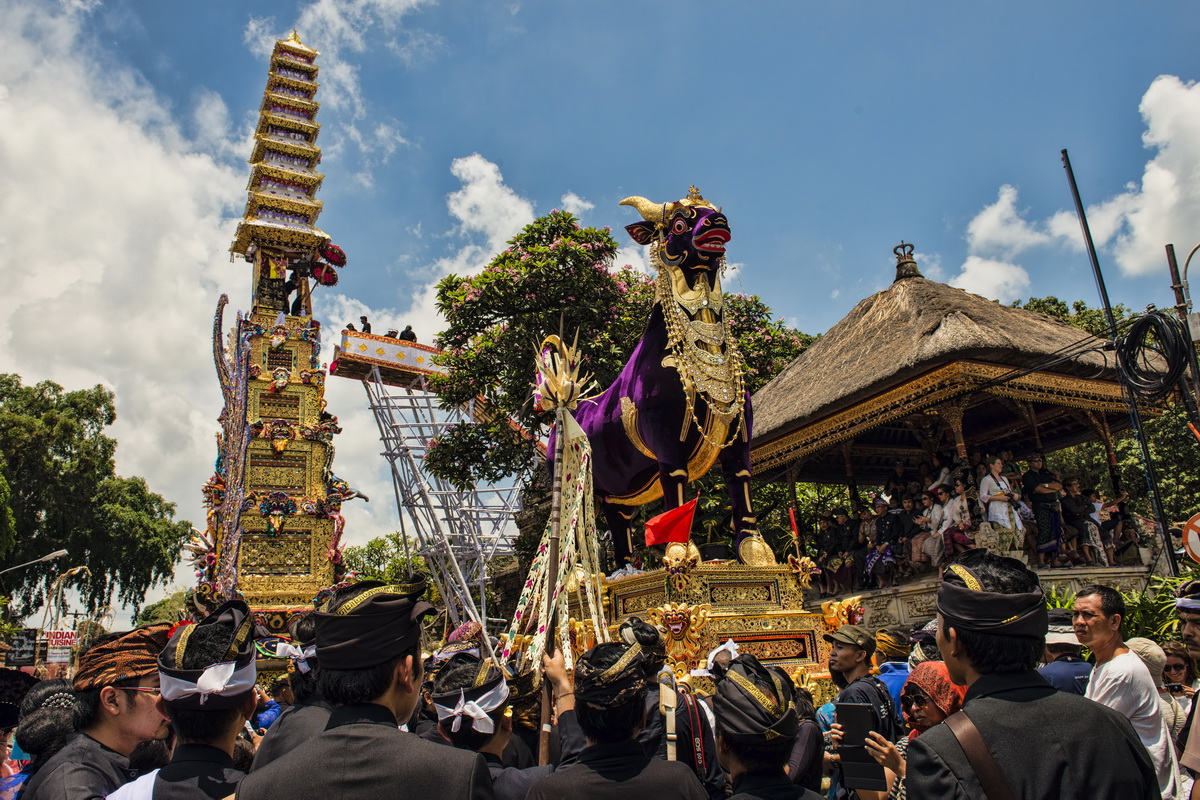

The ceremony called for the construction of a gigantic wooden sarcophagus in the form of a purple buffalo. Together with a 25m tall funeral tower with nine tiers – called a bade.
The number of tiers are an indicator of the seniority of the deceased. With the maximum of eleven tiers reserved for a ruling king.
The ceremony started at 12.30 under a blazing hot sun when the first group of pallbearers, from the more than 2000 who had come from the surrounding villages, literally picked up the cremation tower.
It was quite a sight as it wobbled and then turned in the crowded streets… The tower was then turned sideways so that the coffin carrying the body of Tjokorda Istri Sri Tjandrawati could be transferred from the high platform built to one side.
Royal Cremation in Ubud – To The Cemetery
It was quite a feat in itself but a mere indicator of what was to come. After the police hurriedly cleared the street of tourists. They lifted the sarcophagus and careered around the corner and about 10m down the road. All under the watchful gaze of the royal family in their grandstand seats.
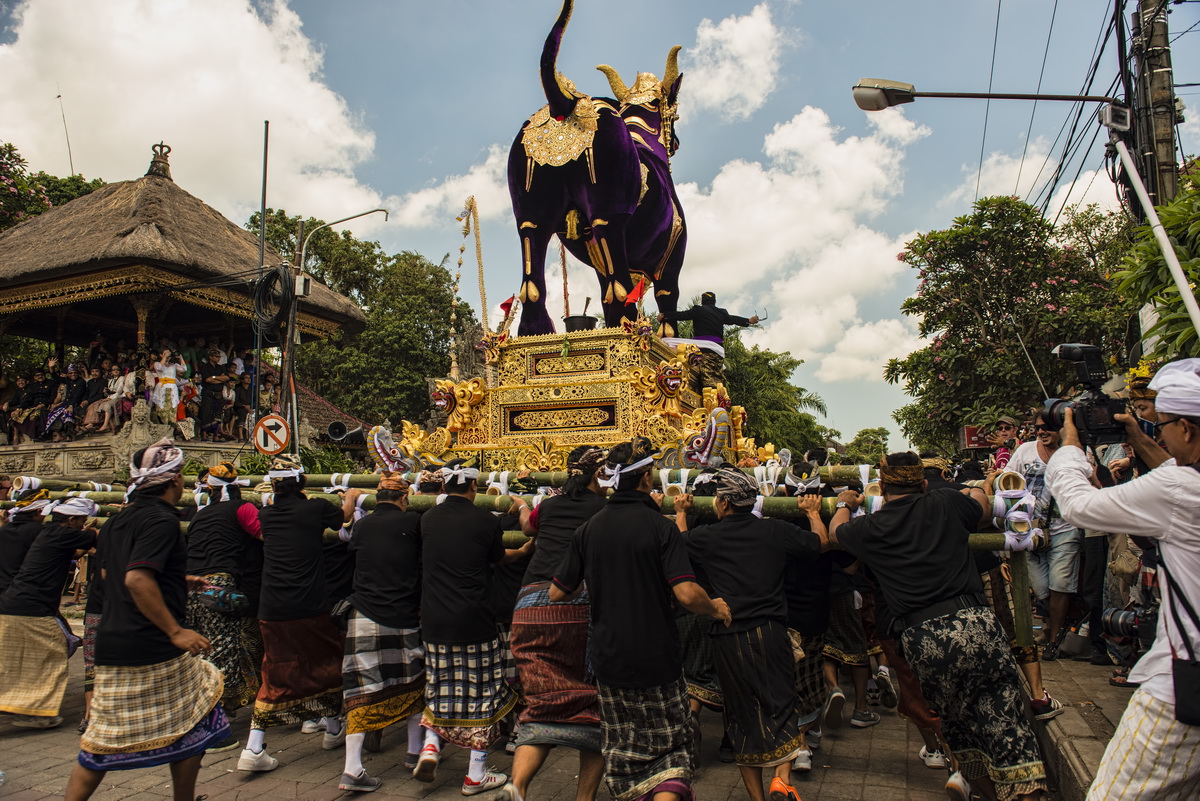
Further hectic clearing of tourists out of the way soon followed. Which has to be said was not explained all that well and ended up with a lot of pushing and shoving of moist, sweat-drenched people back behind an imaginary line. The location of which was far from clear to the “pushee”.
But it all soon became abundantly clear why… When the funeral tower was lifted again and started its 1km journey to the Dalem Puri royal cemetery. Organized chaos is probably the best description as hundreds of Balinese men carried the huge tower down the main street of Ubud. Stopping every 100m or so to change lifting crews. As thousands of tourists followed the procession and generally got in the way.
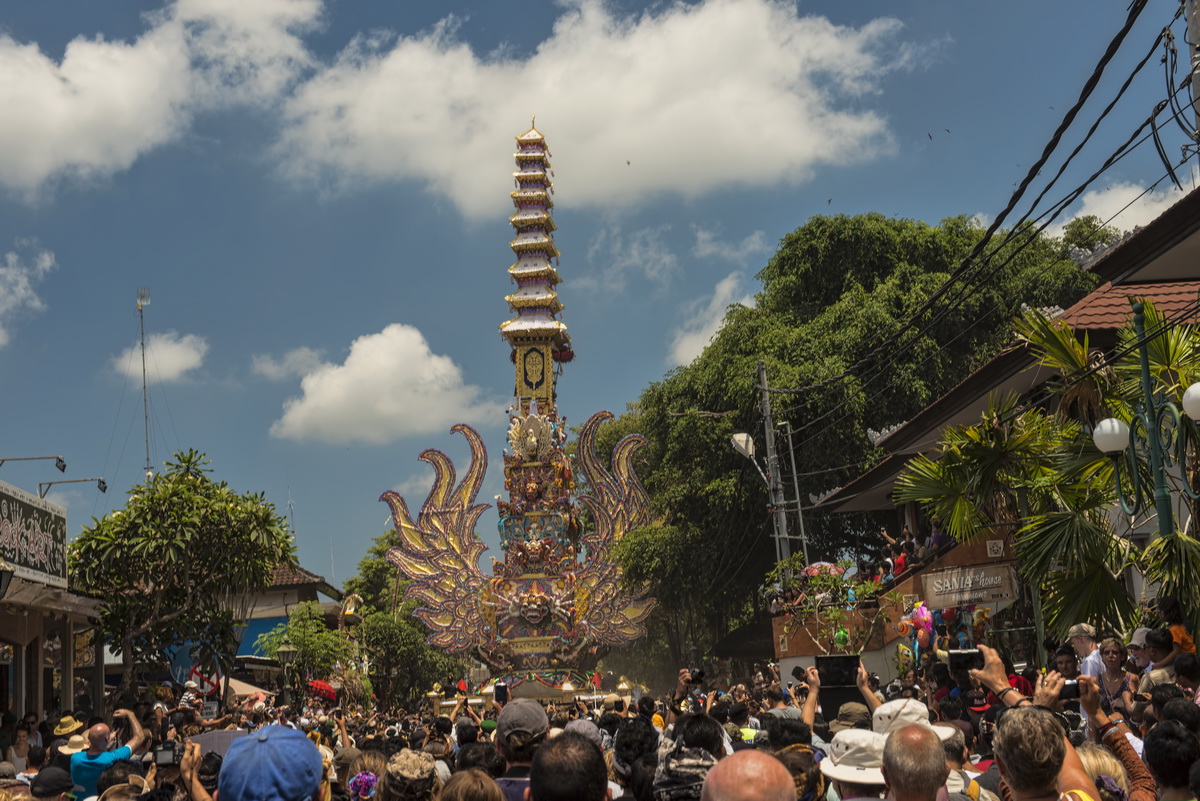
Royal Cremation in Ubud – Ashes to Ashes
To the great relief of all concerned, every body and every thing made the journey to the cemetery safely. The sarcophagus and funeral tower were positioned for the cremation. And then the intricate preparations commenced, including the transfer of the coffin in to the sarcophagus.
A particularly interesting aspect of the ceremony prior to the actual cremation were the troupe of male dancers. Dressed in elaborate traditional costumes, they were clearly relishing their role and enjoying entertaining the crowd.
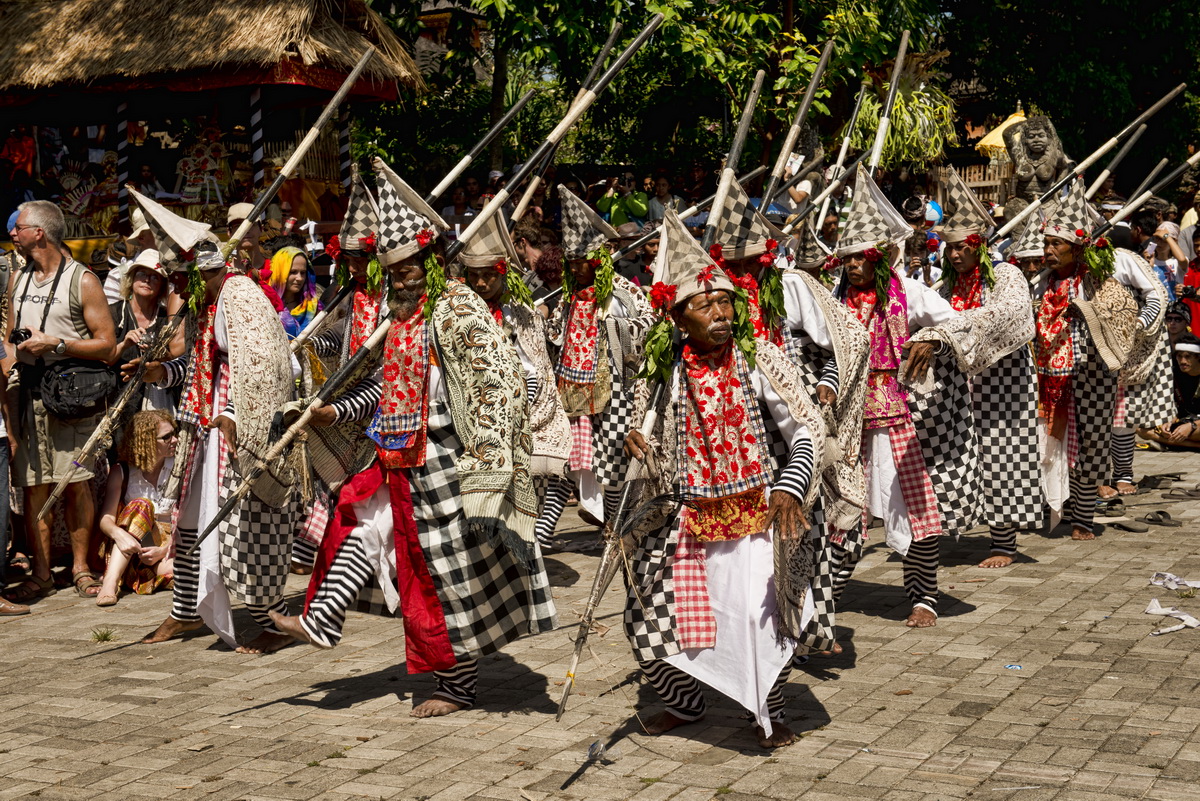
The actual cremation was a very practical affair. And it was very clear that the immediate job in hand was to reduce everything to ashes. From a Balinese perspective, where life is considered a debt. Cremation is the time and place to repay those debts and the body is returned to the elements of the universe, this was very understandable.
However, from a western perspective the use of two large portable “flame-thrower” devices to complete the cremation was a bit confronting and I think this image captures the poignancy of that.
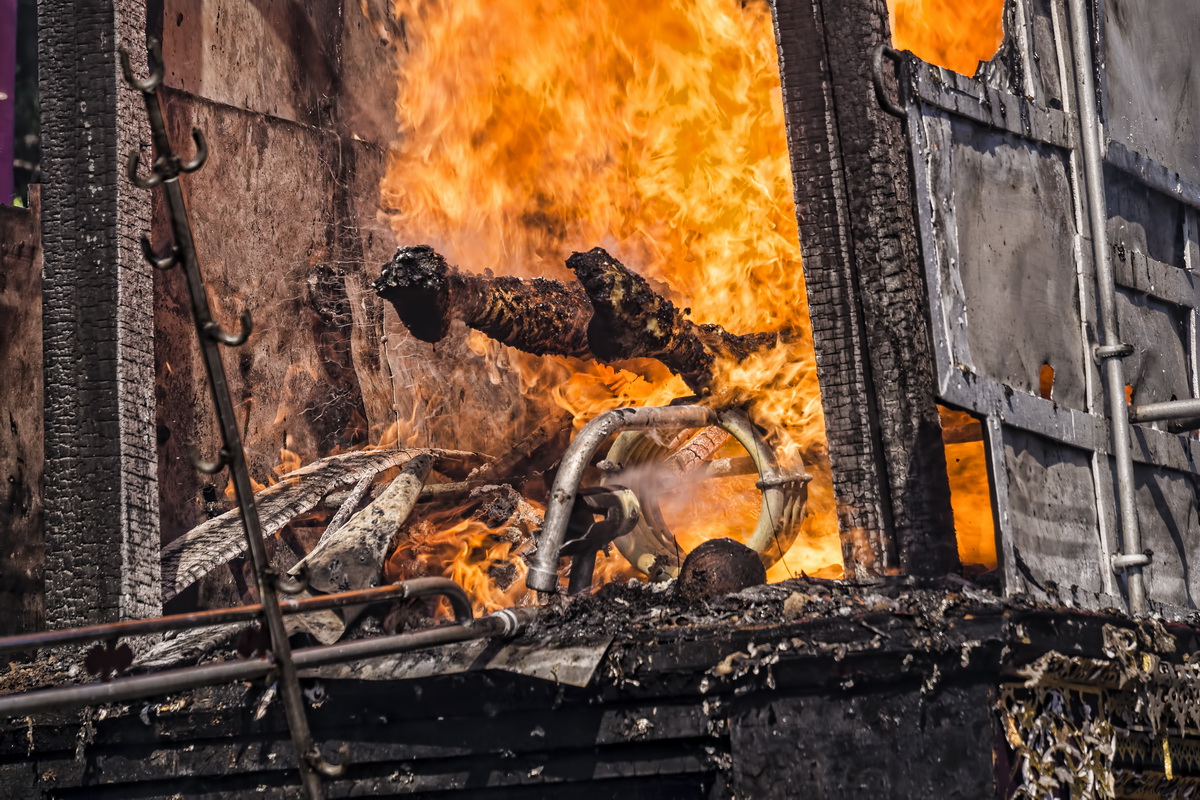
Following the creation a nuduk galih ceremony is carried out. The remains are cleaned with coconut water and then blessed again. After which they are arranged to shape a human form on a piece of cloth.
The remains – ashes, bones and all other parts – are then scattered off Matahari Terbit beach in Sanur.
an interesting event to watch and observe..
great photos, by the way!